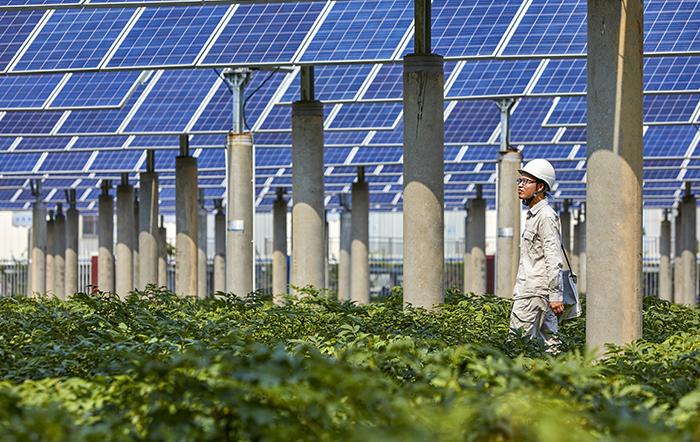First global inventory of solar energy installations created using remote sensing and AI

The number of solar energy installations across the world soared by more than 81% from 2016 to 2018, according to ground-breaking researchfrom an international Oxford University-led team. Solar energy is key to meeting net zero targets, with International Energy Agency (IEA) projections showing a ten-fold increase by 2040 necessary if the goals of the Paris Agreement are to be met. The research, published in Nature, was conducted in collaboration with Descartes Labs and World Resources Institute (WRI).
The solar installation location data gathered by the team will be critical for improving the accuracy of current inventories and future forecasting, helping countries to align their energy systems to their net zero targets. When combined with weather data, the energy generating behaviour of precisely-located solar generating facilities becomes more predictable, allowing a larger share of total power generation to come from solar energy.
The data will also help to ascertain the impact of solar installations on the natural and human-made world. Oxford researcher Lucas Kruitwagen explains, ‘Nothing has been done on this scale before. Our investigation reveals how the growth of solar power facilities has affected ecosystems, agriculture areas and communities. Our new dataset empowers policy makers and planners to navigate the highly-localised trade-offs between renewable energy deployment, food production systems, and biodiversity and conservation.’
The detailed study is releasing, for the first time, a global inventory of commercial, industrial and utility scale solar energy stations. It has located nearly 70,000 facilities around the world, and has enriched this data with facility installation dates, previous land use, and proximity to conservation and indigenous protected areas. The report finds that most solar energy facilities have been installed on land previously used for agriculture, followed by deserts and grasslands. (The global aggregate footprint of solar energy facilities in agricultural areas is less than a hundredth of a percent of total agricultural area.)
‘Machine learning combined with earth observation is the only way to localise infrastructure on this scale. This approach is also unbiased to reporting from companies and countries,’ states co-author Kyle Story at Descartes Labs. The planet-scale study carried out by the team reveals some differences between top-down estimates of solar photovoltaic energy generating capacity reported by the IEA and the new bottom-up asset-level inventory. More generating capacity has been found in the United States (7,639 facilities, 54.1 GW), for example, than reported in top-down inventories (40.2 GW), however the inventory for China (18,449 facilities, 167.4 GW) almost precisely matches top-down estimates (173.5 GW).
Granular energy data continues to be an important gap in understanding the global energy transition. According to Johannes Friedrich at WRI, ‘Information on the characteristics and location of power plants is essential if we want to measure the vulnerability of energy infrastructure to climate change, see progress in energy access or accurately estimate its environmental impact.’ Users can explore the new Global Inventory of Solar Energy Installations dataset and overlay it with climate risk and land cover data on WRI’s Resource Watch platform. The data is openly licensed and available for download.
The machine learning pipeline was conceived and implemented by Lucas Kruitwagen (University of Oxford) and Kyle Story (Descartes Labs). The pipeline was deployed on Descartes Labs cloud computation infrastructure. WRI provided technical guidance and cross-validation data.
Summary
The number of solar energy installations across the world soared by more than 81% from 2016 to 2018, according to ground-breaking research from an international Oxford University-led team. Solar energy is key to meeting net zero targets, with International Energy Agency (IEA) projections showing a ten-fold increase by 2040 necessary if the goals of the Paris Agreement are to be met. The research, published in Nature, was conducted in collaboration with Descartes Labs and World Resources Institute (WRI).
